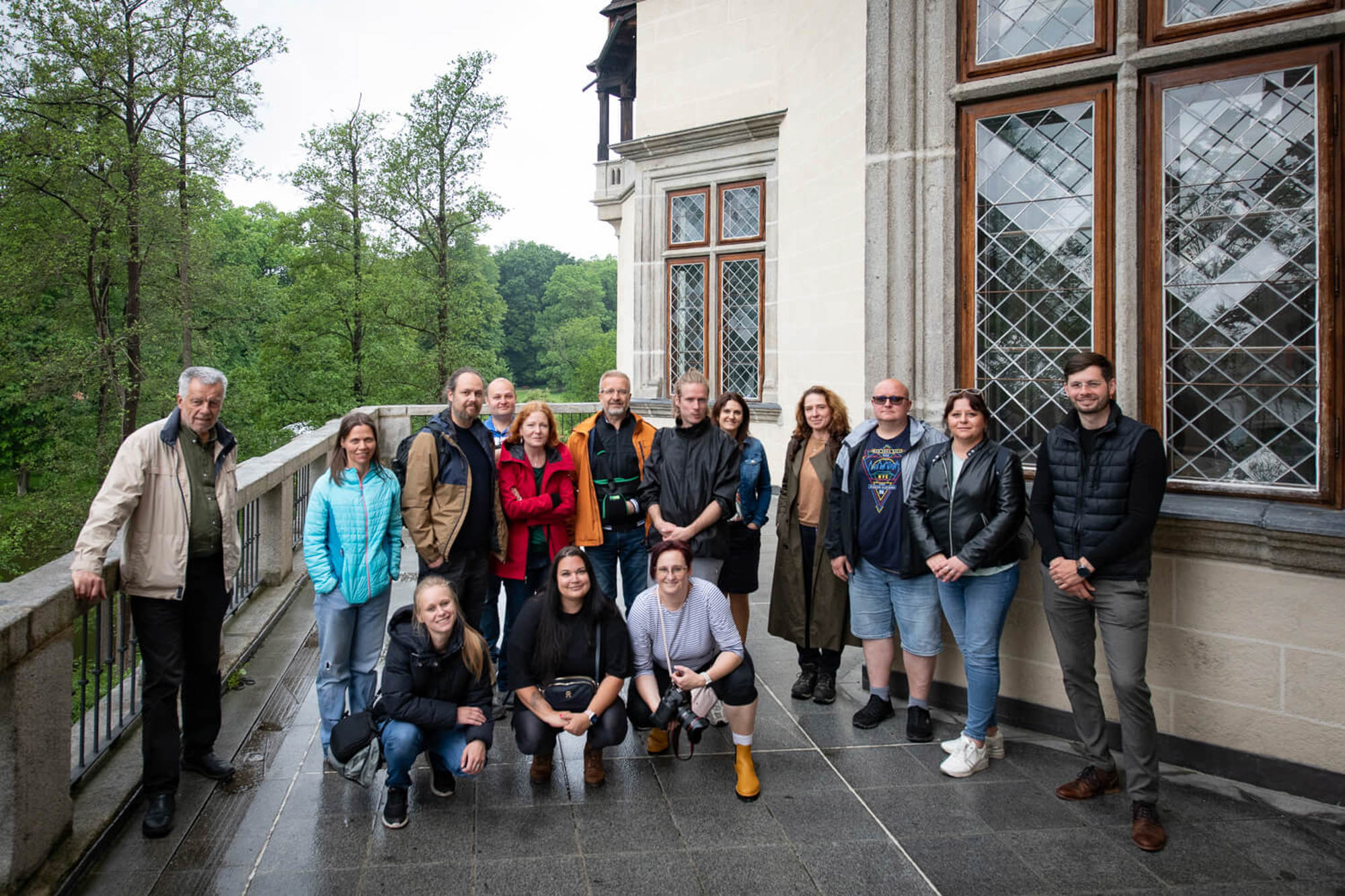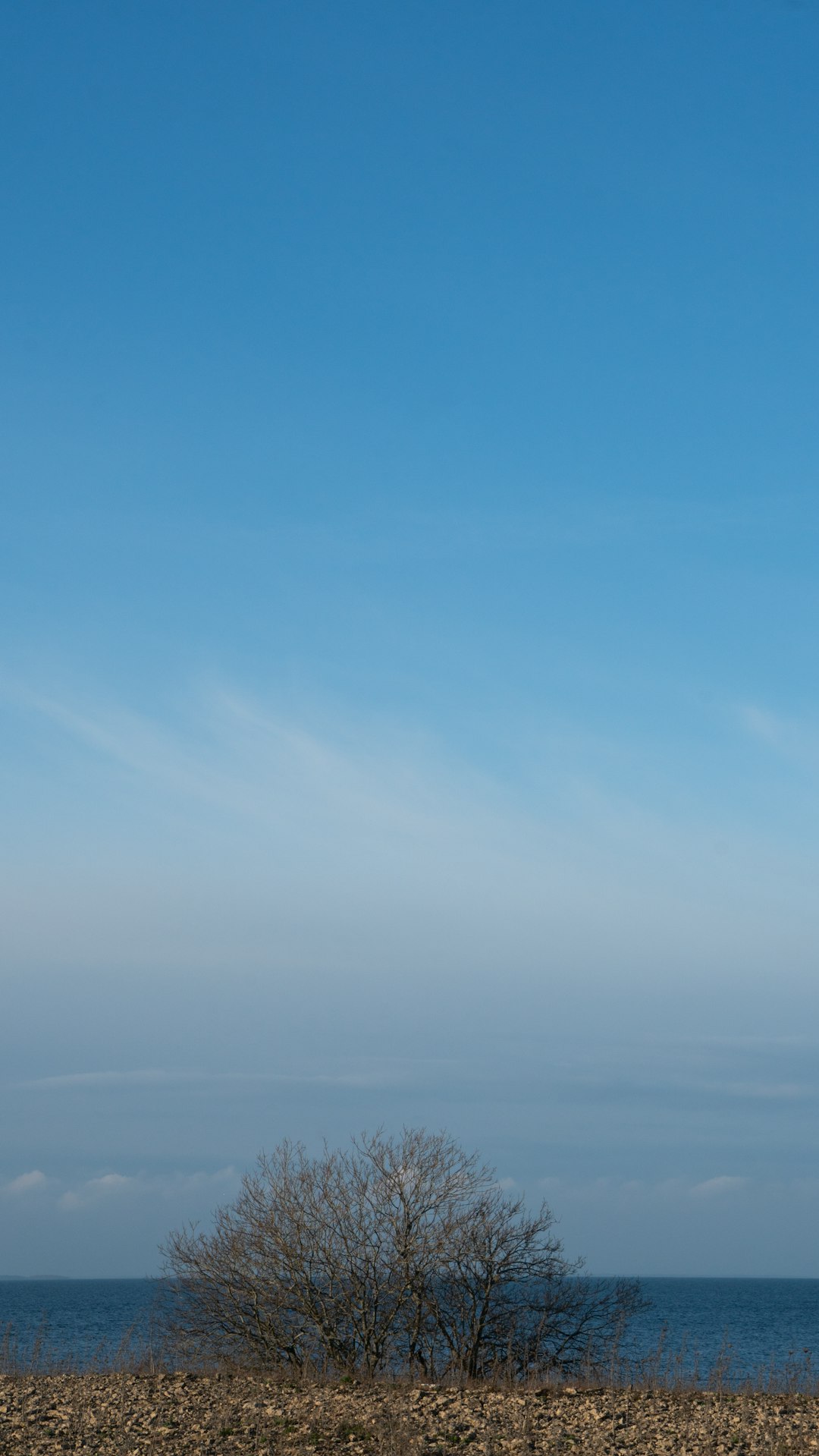In cooperation with the Czech Film Commission, the newly established South Bohemia Film Office presented the diversity of film locations in the region, known primarily for its beautiful chateaux, during the location tour on June 6 and 7, 2023. Accompanying us were Hanka Kabashi from the South Bohemia Film Office and local expert Martin Slavík.

“You targeted exactly what’s been in demand lately. The tour was varied and balanced - every location was interesting in one way or another. For me, one of the best location tours ever,” enthused location scout Tomáš Hásl.
The Village of Slavoňov
At the center of the abandoned village is a dilapidated farm complex with a former distillery. The Baroque granary building is surrounded by farm and residential buildings and several storage sheds. The complex is currently used as a pasture for sheep.
Blatná Castle
The three-winged building surrounded by a moat is one of the best-preserved water manor houses in the Czech Republic. Part of the interior is an exhibition for the public; the unfurnished part awaits reconstruction and transformation into a chateau hotel. A bridge leads from the courtyard to a large English park with an artificial cave.
Jitex Factory
The extensive industrial complex of the Jitex textile company, founded in 1949, includes a factory preserved in almost its original state and still in operation today. Textiles and finished products are produced in mid-century halls set out over four floors on massive machines, the newer ones dating back to the 1980s. The successful Czech Television series Volha was filmed here.
Družba Congress Hall
The generously conceived building was built in 1985 for the District Committee of the Communist Party. The wooden interiors of the building, consisting of a reinforced concrete skeleton, were made by Hikor Písek. The main hall, with a stage and gallery, is dominated by a three-and-a-half-ton chandelier. In the 1990s, the owner ran the region’s largest disco, which took place simultaneously in up to four areas of the building, and the average attendance was around 2,000 people. The building has been abandoned for 12 years and is slowly crumbling.
Heyduk Villa
The neo-Renaissance house with its articulated facade was designed in 1899 by architect Jan Koula for the poet Adolf Heyduk. One of the villa’s apartments is now a museum dedicated to him and is furnished with Art Nouveau furniture down to the smallest detail, including lamps and curtains. Each room has a tiled stove for heating, and the poet had a porcelain toilet bowl decorated with roses sent from Vienna.
Písek Waterworks
We took an unplanned side trip to the old waterworks in Písek, decommissioned three years ago when a new water treatment plant replaced it and has been unused since then. The building still has fully functional electricity, which is extraordinary for brownfields. Plans are underway to turn the waterworks into a summer camp, but until the reconstruction begins, for which the town is still seeking funds, they are happy to welcome filmmakers. There are two building that house water treatment facilities and laboratories.
Hardmuth Villa
The neo-Baroque villa was built at the beginning of the 20th century as a residence for the owner of the Koh-i-noor Hardtmuth factory. A central hall with a wooden balustraded staircase, marble fireplace, stucco ceilings, and wooden paneling dominates the interior. The large conservatory features rock decorations. The region owns the house, and it is currently used as a Center for Children and Youth.
České Budějovice Airport
In 2005, the airport was transformed from military to civilian use. This summer, it will handle several international charter flights for the first time. The 300-hectare complex comprises 120 buildings and objects, including aircraft hangars, military bunkers, and other unused buildings that have fallen into disrepair after the military abandoned the complex.
Archaeoskanzen Trocnov
This model medieval village presents the daily life of its residents as they lived at the end of the 14th century. The historical buildings have been faithfully reconstructed using period building techniques, and the interiors of the manor house are furnished with heating stoves and bread ovens, wooden furniture, everyday objects, and replicas of agricultural and craft tools. The new open-air museum opened to the public in April this year.
Nové Hrady Chateau
The Rococo chateau was built at the beginning of the 19th century. It has its own theatre hall with a balcony supported by wooden columns. Other halls are used for wedding ceremonies or conferences, and part of the chateau is used for hotel accommodation. The terrace offers a beautiful view through the mature trees to the horizon, and a double stone staircase leads down to a large English park with a fountain and pond.
J. K. Tyl Theatre in Třeboň
The Empire-style theatre, dedicated in 1833, is one of the oldest burgher theatres in the Czech lands. The architecturally valuable interior is decorated with a gilt wood chandelier and one of the oldest preserved theatre curtains. There is also a puppet theatre with an auditorium and stage that can be rearranged as needed.
Třeboň Chateau
One of the largest chateau complexes in the country, it features more than 100 living rooms, four courtyards, and a six-hectare park. The outer courtyard of the Renaissance chateau is surrounded by farm and administrative buildings. Most of the facades are decorated with sgraffito.
Contact for filming in the South Bohemia Region:
South Bohemia Film Office, Hana Kabashi (kabashi@jccr.cz, +420 606 351 987)

The mission of regional film offices is to attract audiovisual projects to their regions and to be a reliable source of information for Czech producers.
One of the main tools to draw filmmakers’ attention to the region’s film-friendly locations is the location tour, which is organized for Czech film professionals, from producers and location managers to directors, writers, cinematographers, and film architects, by the regional film office in cooperation with the Czech Film Commission.
A representative of the regional film office connects filmmakers with property managers and owners. A location tour is often the first step towards further inspections for a specific audiovisual work in pre-production.
A photographer specializing in architecture, landscape, and location photography is present on the location tour. The resulting photographs are then used for the promotion of the film-friendly locations both by the regional film office and the Czech Film Commission for promotional activities aimed at foreign filmmakers and are actively offered when specific requests from abroad are received.












































































































































































































































































